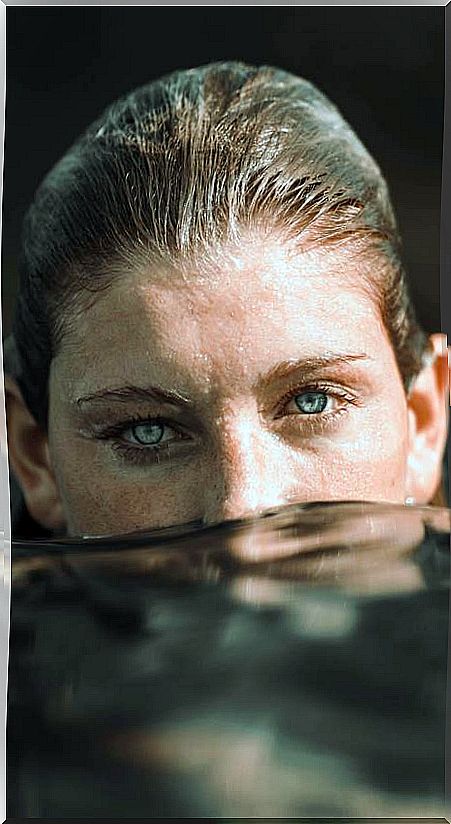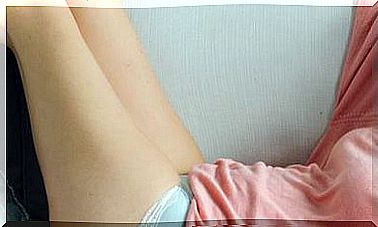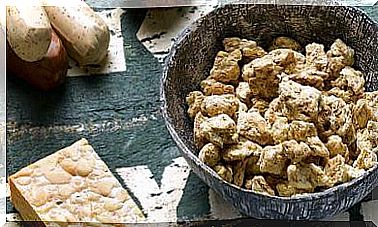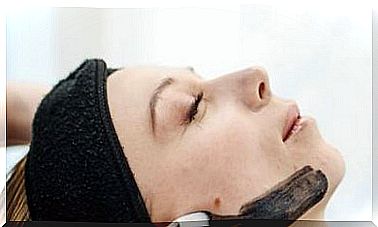Why The Sea Is A Real Cure For Your Skin
Diving into the sea is a real cure for the skin. Salt, sea mud, algae and other marine elements provide beneficial substances.

- Benefits of sea salts
- How to use the salts?
- Properties of sea mud
- Algae and cosmetics
- Green algae
- Red algae
- Brown algae
- Chitosan, ally for hair
- Plants in the marine environment, just as healthy
- Thalassotherapy in the bathtub at home
If life was born in the sea, the natural thing is that solutions to many health problems are found in it .
Thalassotherapy – from the Greek thalasso (“sea”) and therapeia (“care”) – is based on this principle , a way of healing with marine elements that was already proposed by the great Greek physician Hippocrates 2,500 years ago.
And it is that only bathing in the sea can already be therapeutic.
Diving into the sea allows the body to come into contact with dissolved substances such as salts and microorganisms that can enhance health while nourishing and balancing the skin. Not surprisingly, the similarity between the proportion of salts in oceanic waters and that of blood plasma and amniotic fluid is curious .
The massage of the waves, the stimulation of the sun, the possibility of walking barefoot on the sand, or the purest air that can be breathed on the coast, are other reasons why enjoying the beach and the sea is a cure health and beauty.
The natural cosmetics takes therefore the coast and oceans some of its most precious ingredients. The oceans contain a large number of elements and nutrients of cosmetic utility, and surely many remain to be discovered.
Below are some of the most characteristic ones, which can be of great help in caring for your skin.
Benefits of sea salts
Seawater contains around 3.5% salts, mostly made up of sodium chloride. These are often found in cosmetic products for their skin properties.
On the one hand, they have an interesting antiseptic capacity. On the other, they promote saliva secretion and decrease tartar production, which explains the effectiveness of saline toothpastes.
Sea salts are also the main ingredient in bath salts, which are generally used for relaxing purposes.
Of all the marine salts , those of the Dead Sea stand out for their particularities, a lake that is located 400 meters below sea level between Israel, Jordan and Palestine.
Its name comes from its high concentration of salts (ten times higher than that of the ocean), which makes people float comfortably in its waters.
Contrary to what this name suggests, its salts contain many trace elements, which makes them an exceptional treatment for the skin and a true source of life.
These salts have, in order from highest to lowest concentration :
- Sodium chloride, beneficial for lymphatic circulation and defenses.
- Magnesium chloride, which helps reduce stress, relax skin, and fight allergies.
- Calcium chloride, a good ally of blood circulation.
- Potassium chloride, an ionic balancer.
- Magnesium bromide, which acts as a muscle relaxant and decontracting agent.
- Calcium sulfate, which strengthens nails and bones.
And so up to 21 trace elements that constitute a great food for the skin.
The salts of the Dead Sea can be used to improve acne, given its antiseptic capacity; reduce cellulite thanks to its draining power; and eliminate itching in cases of eczema, allergies and even psoriasis.
How to use the salts?
To treat specific areas, just mix two tablespoons of salts in a liter of water and apply this mixture to the area of the skin that you want to heal. You can also make a bath simply by adding them to the bathtub.
Another way to use them is by mixing a little salt in a tablespoon of virgin olive oil. With this formula, you can perform a peeling to remove hardness from the heels and elbows or gently rub the scalp to stimulate capillary circulation and improve alopecia.
Properties of sea mud
The mud was already known to the ancient Egyptians. It is said that Cleopatra incited Marcus Antony to have the Roman legions invade the Dead Sea in order to make use of its clay.
Marine mud is used for its richness in salts. They retain water and heat and allow elements that are suspended in seawater to pass through the skin .
In addition, the water causes beneficial bacteria to grow in the mud that improves the protective flora of the skin, while the salt prevents other harmful ones from growing. They are then known as peloids.
In Spain, the sludge from La Manga del Mar Menor is highly appreciated for its therapeutic properties .
Applied as a mask, sea mud allows you to thoroughly cleanse the skin. Due to this purifying capacity, they are especially recommended for oily and impure skin.
Algae and cosmetics
Algae live in both fresh and marine waters. There is a great variety of species, from unicellular microalgae to macroalgae of several hundred meters.
Their color changes depending on the depth at which they inhabit: the green ones are found on the surface of the sea and, as one descends towards the bottom, the red and brown ones.
Seaweed is a barely explored underwater pharmacy, although its richness in mineral salts and other compounds has been used in cosmetics for centuries. Some of the most used are detailed below.
Green algae
One of them is chlorella, a microalgae with a great capacity to produce amino acids and peptides, and which has been widely studied as an alternative food source. It has vitamins C, E and group B, and macromolecules such as chlorophyll and porphyrins. All this makes it an interesting antioxidant and gives it the ability to eliminate waste substances deposited in the body.
Another green algae used in cosmetics is enteromorpha compressa , about 30 cm long, with antioxidant vitamins A, C and E, and amino acids such as hydroxyproline, one of the main constituents of collagen.
Red algae
Those that have been used the most for cosmetic purposes are Irish moss (Chondrus crispus) , from which carrageenan comes, and agar-agar (Gelidium cartilagineum) .
These hydrocolloids applied in cream are purifying, as they eliminate many toxins. In addition, due to their ability to soak up water, they favor skin turgor. They also have trace elements with nutritional properties.
Brown algae
Fucus algae and laminaria are two of the most used for a long time due to their content of iodine, alginates and vitamins.
The fucus, also known as sargassum, can measure hundreds of meters; contains a polyphenol, fucan, which protects sensitive and dry skin.
The smaller laminaria has a higher concentration of iodine. This mineral is absorbed through the skin and stimulates thyroid metabolism, which favors catabolism and the elimination of fats, which is why it is frequently found in slimming cosmetic products.
Another algae worth mentioning is spirulina, a microscopic blue-green algae with exceptional virtues. Widely used in food, it stands out for its richness in proteins and minerals such as iron, calcium, phosphorus and zinc. It also provides B vitamins and omega-3 and 6 polyunsaturated fatty acids. Therefore, formulated in creams, it can be used to oxygenate and soothe the skin, and promote cell renewal.
Chitosan, ally for hair
Extracted from the shell of marine crustaceans, chitosan is sometimes used in moisturizers to take advantage of its ability to prevent water loss.
It is also found in conditioners and other hair products, as it helps eliminate electrostatic charge and facilitate styling, leaving hair looser.
Plants in the marine environment, just as healthy
Some plants, when growing near the sea, develop unique properties that make them very beneficial for the skin.
The frost plant (Mesembryanthemum crystallinum) is one of them. It can be found on the coast in sandy and saline soils, shining like frost when the sun hits it.
Despite growing in an extreme environment, in terms of temperature, amount of sun and substrate in which it grows, it has developed mechanisms that make it appear as a succulent plant full of vitality.
Its active principles include pigments with the ability to protect itself from radiation such as betacyan, but above all a substance similar to the natural protective factor of the skin that makes it very useful in the treatment of eczema and dermatitis.
Thalassotherapy in the bathtub at home
Benefiting at home from the therapeutic virtues of a sea bath is at your fingertips.
The bathtub is filled with water at about 35 to 37 ºC and a kilo of salt is poured into it . They can be salts from the Dead Sea, the Himalayas, or even unrefined sea salt.
At that temperature and with that salt concentration, the elimination of toxins from the body is favored.
If you want a relaxing bath, you can add 20 drops of lavender essential oil, while if you want an energizing one, use rosemary essential oil.
Accompanied by some quiet music, it only remains to immerse yourself in the water for about twenty minutes and, if the problems do not disappear completely, at least they will be seen differently.









